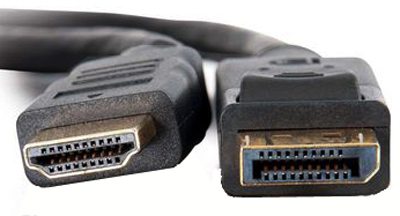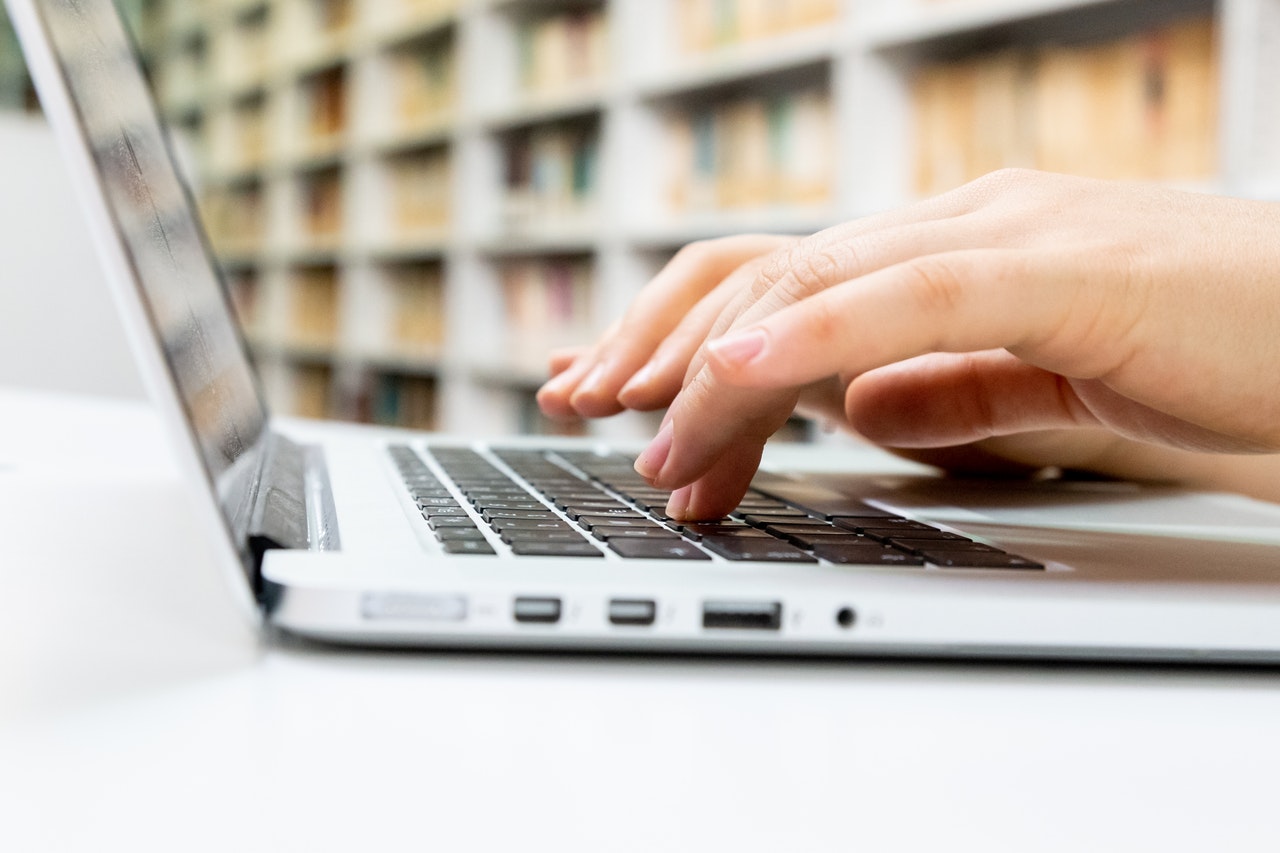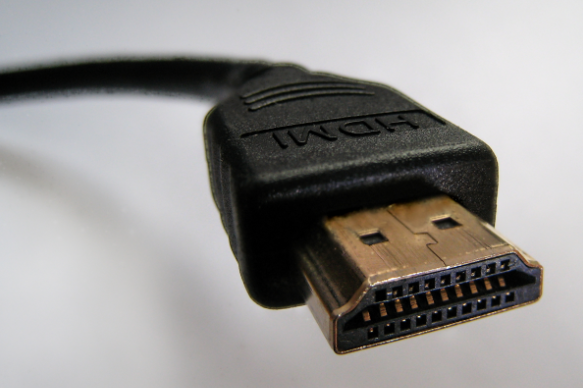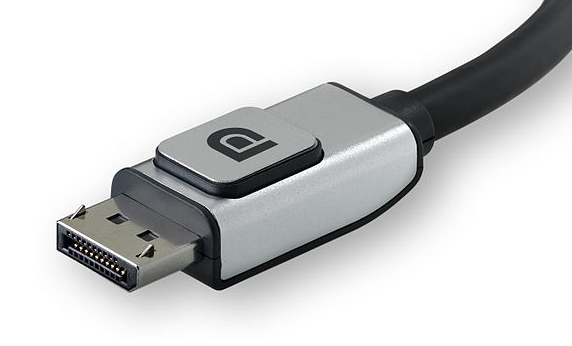Displayport vs Hdmi – Which Is The Best?
Can an older connector outrun the newer and more sophisticated ones? Is there a difference between two distinct cables technologies or do both of them have kind of the same capability? What are their main, or better put unique features that would make you pick one over the other? Today we take a detailed look on the ultimate cable showdown, Displayport vs HDMI!
DisplayPort vs HDMI

Both connectors are primarily used to output an optical signal, being able at the same time to do this with audio. Most, if not all the modern televisions and consoles have an HDMI connection. This is why the older HDMI is the main cable of choice by the majority of people. But what about other devices such as a graphics card you’ll have to connect to your PC monitor or a projector you’d use with your laptop.
Truth be told, the capabilities are fairly similar, but there are some particular differences one would have to pay close attention to in order to get the best possible result. We will go over the most important aspects later on but for now, let’s go through a few queries most people have.
Price
Let’s address the elephant in the room; the very first thing humans tend to notice when buying something is the price. Each company targets a specific group of people. Some are willing to give more in order to receive more, in terms of quality, of course, while others prefer choosing the best bang for their buck. This is a common incident in the tech realm. It’s like Apple’s iPhones and Android phones. The first are of higher build quality, material wise, while most of the others are sold at a fairly lower price point.
Sure, you’re going to find exaggerated prices like $20 or $30 a piece for a 1.5m long gold plated cable but that won’t really affect your results. It is a gimmick companies use to sell their products while having a bigger profit. That being said, you shouldn’t choose the $1 eBay cables either. The only occasion materials do matter is when used in longer cables, but we’ll talk about that later on.

Price-wise, HDMI cables are usually cheaper than DisplayPort ones simply because they are used by the vast majority of people and due to the slightly larger number of connections in the latter.
What Are Used For?
No matter what ignorant people will say to you even though the two cable types are used mainly for the same reason they still remain fairly distinct as they differ in many aspects. First off, where is each of them used?
HDMI is, as people say, the golden standard. Buying a device which can output video and audio, means that having an HDMI port on it is pretty much guaranteed. Plus, they don’t need any special knowledge as they are plug and play meaning that as soon as you connect the device to a display, you’ll be ready to go.
Displayport, on the other hand, is a notch higher on the result scale. It is the best choice when used to connect computer peripherals or hardware such as graphics cards.
Capacities & Disadvantages

And now the time you’ve all been eagerly waiting for, DisplayPort vs HDMI. What are the capacities of each and where do they fall back when compared?
Output Quality (Video – Audio)
It goes without saying, that both cables can transfer and thus output video at a Full HD (1920×1080) resolution but what about the refresh rate?
The first version of HDMI was able to output 1080p and WUXGA (1920×1200) video at 60Hz. As time went by these numbers increased but 4K resolution was still out of the question up until the moment HDMI 2.0 was released. At this moment, the cables now have enough bandwidth to output 4K video at a steady refresh rate of 120Hz. They can also output 5K, 8K, and 10K resolutions at the same rate.
This, however, increases the cost as not all cables have the same capacities. For example, the mainstream protocol is the one used in the HDMI High-Speed Cable which will provide you with 4K resolution that only goes up to 30Hz. The Ultra High-Speed HDMI ones are the best version available for purchase.
Moving on to the DisplayPort you’ll quickly notice things are getting fairly better. Not only is this cable able to output bigger resolutions with more ease but it will output multiple video and audio channels at the same time whereas HDMI lacks this ability. But this is a counterpart by the fact that they can’t transfer ethernet signal. This takes us to our next point which is the maximum length of transmission.
Signal Capabilities

Previously we mentioned that the materials used to create the cable can affect and thus enhance its maximum capabilities, especially regarding the ability to conserve the transfer speed without losing pieces of data resulting in a lower resolution. Things are pretty much the same here so we won’t be going into a lot of detail.
The basic passive copper DisplayPort cable can support a resolution of up to 3840×2160 over a distance of 6.5ft maximum. If you want to go as long as 50ft you’re going to have to limit yourself to a 1080p resolution but in some cases you may even be able to achieve a 2560×1600 resolution.
Active copper DisplayPort cables draw power through the connector which then powers a built-in signal amplifier making it able to transmit 2560×1600 resolution over 65ft. Last, optical fiber cables can go on for hundreds of feet without losing signal quality.
As for HDMI, the maximum resolution is limited by the bandwidth available. Regarding the distance of transmission, refer to the HDMI cable types we mentioned beforehand as they are usually sold in many different length versions.
Advantages of HDMI

Moving on in our DisplayPort vs HDMI faceoff, the main differences between the two cables won’t interest you unless you are a PC gamer as this is where most features play distinct roles. For example, AMD graphic cards that feature FreeSync will only work over HDMI but you’d also need a FreeSync enabled monitors which are usually pricier than the regular ones.
Moreover, the newer HDMI versions support HDR (High-Dynamic-Range Imaging) as well as enhanced Audio Return channel (eARC) feedback. If combined with a good headset a graphics card connected over an HDMI cable can work wonders. If you want to play on a single screen at a high resolution, maybe even at 4K, you should be aware that not all games support doing so. If you want to move on to bigger resolutions and gaming on multiple screens then you should choose the DisplayPort.
Advantages of DisplayPort

When it comes to PC and console gaming, Displayport vs HDMI is a known rivalry as the former one supports both Nvidia’s G-Sync and FreeSync technology while the latter, as previously mentioned, solely supports FreeSync. That being said, you can connect up to 4 screens with a single DisplayPort cable or even up to 6 screens at a lower resolution or by using a signal splitter.
Don’t forget that you also have the ability to output different audio signal to each of them as well. Graphics cards often provide more than one HDMI port but only a single DisplayPort. Now you know the reason behind this.
But what if you want to go all in for the best gaming experience? We are of course talking about 144Hz refresh rates. You would need a compatible monitor that supports that high of a refresh rate. Those monitors cost more but you’ll get the maximum results. ONLY DisplayPort cables support 144Hz refresh rates so in this section of DisplayPort vs HDMI, the winner is clearly DisplayPort.
Keep in mind that you still can use a single HDMI cable to connect two or more devices but you’d need a good splitter which is going to cost you more money than having bought a DisplayPort cable to begin with. So why go through all this hassle just to get mediocre results when you can have the best possible result while spending the same amount of money if not less.
DisplayPort vs HDMI – Which Is the Best

So even though the vast majority of the population uses HDMI as it is very easy to use and if you need it for something simple, we too would advise you to pick HDMI rather than DisplayPort as it is fairly cheaper. But if you want to get the best results without losing any quality over the way then choosing the DisplayPort cable’s route is a no-brainer.
The DisplayPort vs HDMI debate is coming to an end but before you go, we’d like to give you one last piece of advice. No matter the reason you may need a cable for, take your time and do your market research. Pay close attention to every detail. If you have any questions just read this article again and everything will become clear. Hope you learned a thing or two after this!
